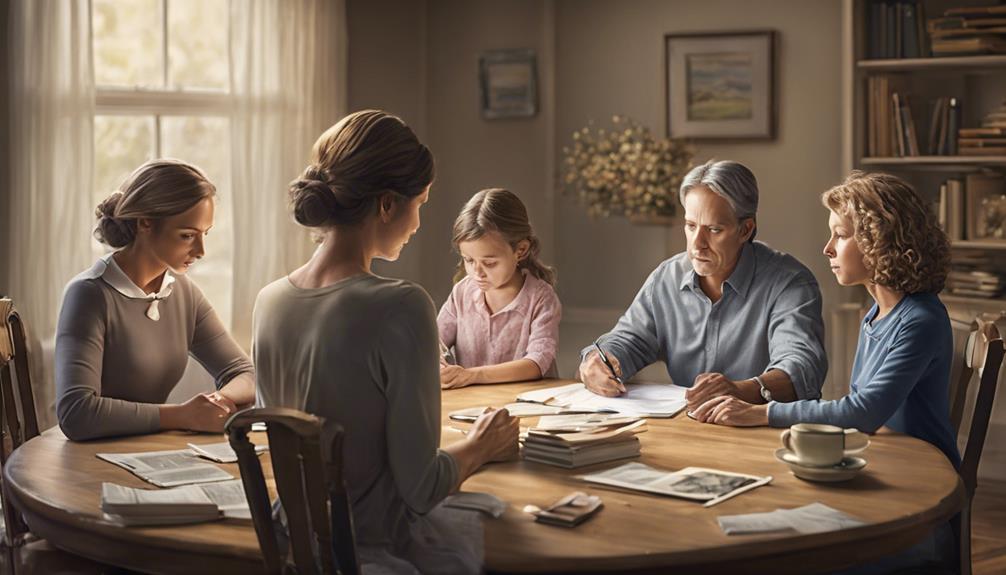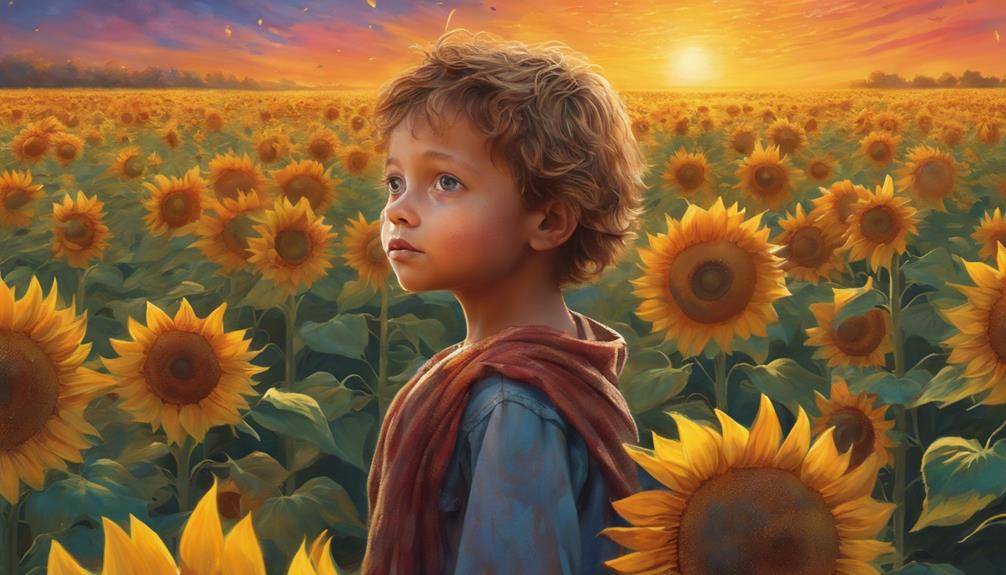You may not realize that children’s books can be powerful tools in helping kids understand and cope with the complexities of divorce. These books provide different perspectives and stories that address children’s emotions and thoughts during difficult times.
As we explore 10 carefully selected children's books about divorce, we uncover valuable insights and resources that can support children in navigating their feelings and fostering resilience.
Key Takeaways
- Unique storytelling perspectives help children grasp divorce concepts.
- Comforting narratives assist kids in coping with dual living arrangements.
- Emotional support and understanding normalize feelings post-divorce.
- Celebrating family diversity nurtures empathy and inclusivity in children.
Dinosaurs Divorce
In 'Dinosaurs Divorce', we journey alongside relatable dinosaur characters as they navigate the complexities of family separation with colorful illustrations and simple language. This book, designed to help kids understand divorce, uses engaging storytelling to address common questions and concerns children may have during this challenging time. Through the adventures of these dinosaur families, kids can relate to the emotions and changes that occur when parents decide to separate. The book not only educates but also provides a comforting space for children to process their feelings and learn about different family structures.
'Dinosaurs Divorce' stands out among children's books for its ability to spark conversations about divorce in a soothing and informative manner. By exploring the topic through the lens of these lovable dinosaur characters, kids can find solace in knowing that they aren't alone in their experiences. This book serves as a valuable resource for families navigating the complexities of divorce, offering a supportive and relatable narrative for kids to lean on.
Two Homes

As children adjust to dual living arrangements post-divorce, 'Two Homes' by Claire Masurel offers a comforting narrative on navigating change.
The book sensitively addresses common concerns about transitioning between parental households and highlights the importance of finding stability and love in both homes.
Through its gentle storytelling, 'Two Homes' serves as a valuable tool in helping children cope with the challenges of having two residences.
Dual Living Arrangements
Navigating between two homes can be a challenging yet familiar journey for children experiencing divorce, as depicted in books like 'Two Homes' by Claire Masurel. In these dual living arrangements, children often find comfort in the special places and familiar elements each home offers.
Claire Masurel's book highlights the importance of reassurances from parents in both households, providing a sense of safety and support for the child. Understanding this transition can help children cope with the changes post-divorce, knowing they've a place in each home.
'Two Homes' beautifully captures the emotional journey children go through as they adapt to life in separate households, offering a reassuring perspective on the concept of two homes.
Coping With Change
Moving between two homes can be a significant adjustment for children experiencing divorce, and 'Two Homes' by Claire Masurel offers a comforting exploration of coping with these changes. This book helps kids navigate the process of divorce by showing them that it's okay to have parents who live in different places.
It highlights the positive aspects of having two homes, emphasizing the familiar and reassuring elements found in each household. 'Two Homes' aims to normalize this new family dynamic, providing emotional support and understanding for children as they adapt to living in separate households.
Living With Mom and Dad
Understanding the daily routines and adjustments that come with living in two homes can be challenging for children experiencing divorce, but 'Living With Mom and Dad' by Melanie Walsh helps reassure them by showcasing familiar elements in both households.
- The book portrays life in separate houses with familiar elements for children experiencing divorce.
- It highlights the day-to-day routines and adjustments children may encounter when living in two homes.
- It reassures kids by showing that even though things have changed, there are still comforting and consistent aspects in both households.
In 'Living With Mom and Dad,' children see through simple and relatable illustrations that it's possible to adapt to a new family dynamic after divorce. The book emphasizes that love and support can be present in different ways, even in separate living arrangements.
Mom's House, Dad's House
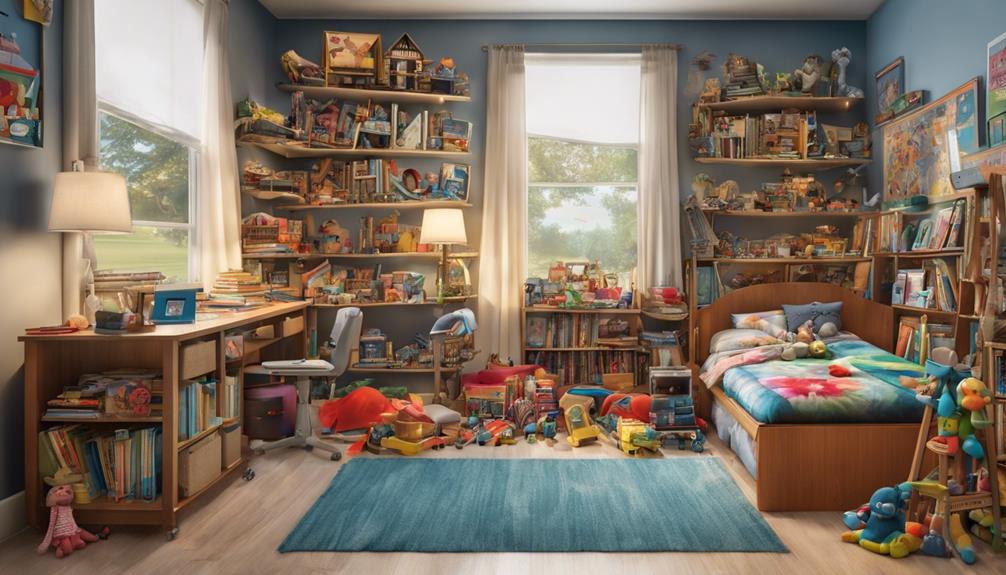
As children adjust to the complexities of living between two homes post-divorce, 'Mom's House, Dad's House' by Isolina Ricci, Ph.D., offers valuable insights into creating a stable and nurturing environment for them.
This book delves into the psychological aspects of transitioning between mom's house and dad's house, providing practical guidance for parents on effective co-parenting strategies. Isolina Ricci, Ph.D., a seasoned family therapist, emphasizes the significance of maintaining consistency, open communication, and cooperation between parents in order to ensure the well-being of children in two-home settings.
When Something Terrible Happens

When something terrible happens, like a traumatic event or a difficult situation, it's natural for children to feel overwhelmed and confused.
In these moments, it's important for kids to cope with their emotions by expressing themselves and seeking support and comfort from trusted adults.
'When Something Terrible Happens' by Marge Heegaard offers a nurturing approach to help children navigate through tough times and find ways to heal and grow stronger.
Coping With Emotions
Navigating through tough times can be challenging, especially for children facing situations like divorce. When children experience something terrible, it's normal for them to feel sad and overwhelmed. Here is a guide for kids on coping with emotions:
- Acknowledge Feelings: It's okay to feel a range of emotions like sadness, anger, or confusion. Expressing these feelings is an essential step in coping.
- Talk About It: Find someone you trust—a parent, family member, or counselor—to share your feelings with. Talking about your emotions can help you feel supported and understood.
- Engage in Creative Activities: Drawing, journaling, or using interactive prompts like in 'When Something Terrible Happens' can help you process your emotions in a healthy way.
Seeking Support and Comfort
Coping with difficult emotions can be overwhelming for children, especially during challenging times like parents' divorce.
'When Something Terrible Happens' by Marge Heegaard is a valuable resource from the selection of Children's Books About Divorce, offering comfort and support. This book provides a safe haven for children to process their feelings and comprehend distressing situations. Through art therapy techniques, it engages kids in exploring their emotions and guides them on coping mechanisms.
By encouraging open communication and seeking support, 'When Something Terrible Happens' helps children navigate through tough times and express their emotions constructively.
During times of upheaval, finding comfort in books like these can make a significant difference in a child's emotional well-being.
Who's In My Family?
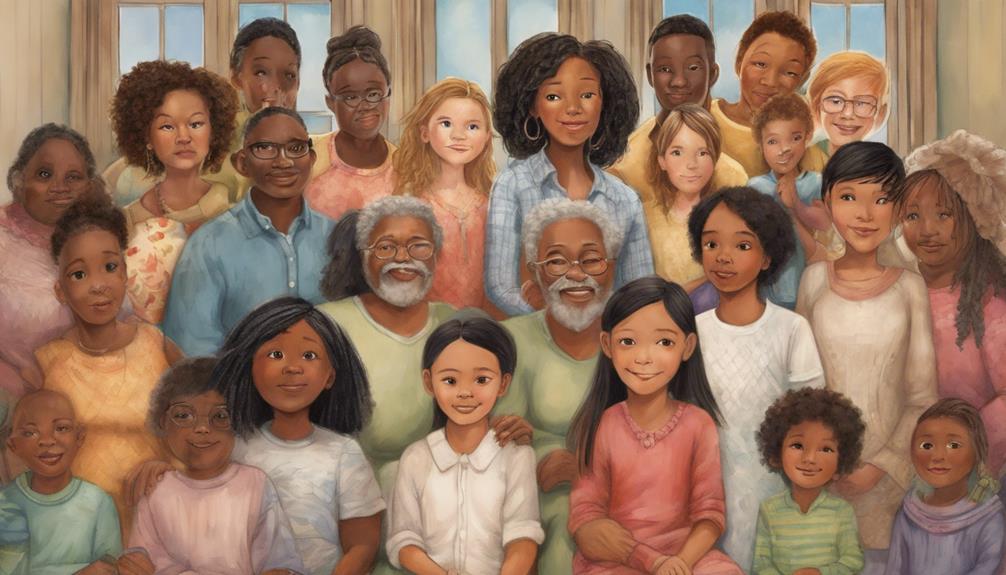
'Who's In My Family?' by Robie H. Harris beautifully illustrates the diverse tapestry of family structures, fostering understanding and acceptance in children.
This book, along with a list of other children's books like 'Family in Pieces' and 'Parents Are Separated,' delves into the complexities of family dynamics, showing children that families come in all shapes and sizes.
By exploring different family compositions, 'Who's In My Family?' helps children understand that there's no one-size-fits-all definition of a family, promoting inclusivity and empathy.
Through its storytelling, this book encourages children to embrace the uniqueness of their own family while appreciating and respecting the diversity in others.
In a world where families vary widely, 'Who's In My Family?' serves as a guiding light, illuminating the beauty of different family structures and nurturing a sense of belonging and understanding in children.
The Great Big Book of Families
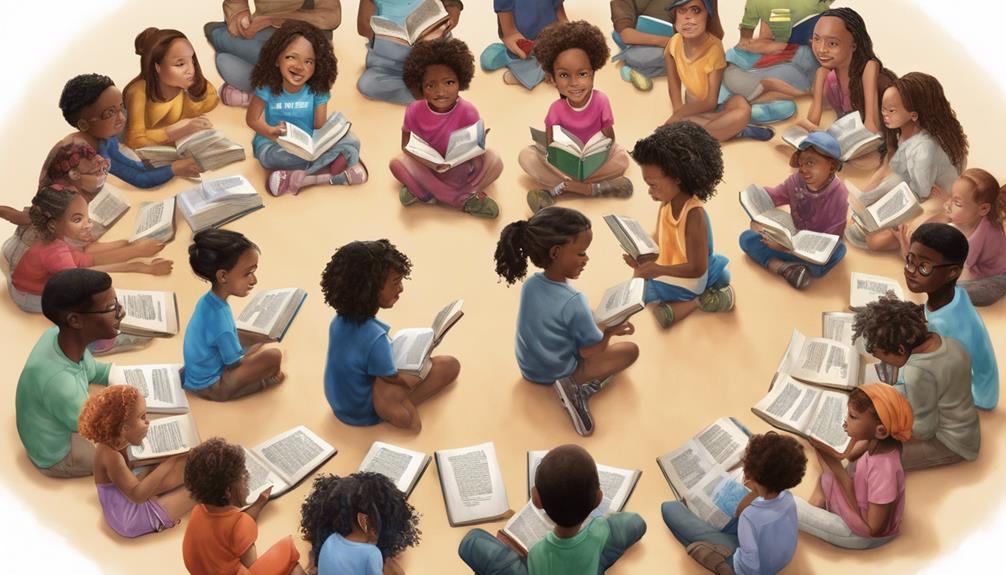
Celebrating the rich tapestry of family diversity, 'The Great Big Book of Families' by Mary Hoffman invites children to explore and appreciate the myriad of family structures that exist in our world. This picture book is a wonderful tool for helping kids cope with the concept of different family setups. Through engaging storytelling and vibrant illustrations, children can see families from various cultural backgrounds, ethnicities, and lifestyles, emphasizing inclusivity and acceptance. 'The Great Big Book of Families' beautifully showcases the idea that no two families are exactly alike, but they're all united by love and togetherness.
In this book, children can learn valuable lessons about the importance of understanding and respecting different family dynamics. By promoting empathy and appreciation for diverse families, 'The Great Big Book of Families' helps kids develop a sense of openness and compassion towards others. Jennifer, in 'Friends', would surely enjoy exploring the colorful pages of this book and discovering the beauty of family diversity.
In My Heart

Exploring the realm of children's emotional experiences, 'In My Heart' by Jo Witek with illustrations by Christine Roussey offers a poignant journey into understanding and expressing diverse feelings and emotions. This beautifully crafted book can be particularly beneficial for children navigating the complexities of divorce.
Here's why 'In My Heart' is a valuable resource in helping children cope with emotional challenges:
- Feelings Identification: The book helps children identify and label their emotions, fostering a sense of self-awareness and emotional intelligence.
- Emotional Expression: Through vibrant illustrations and heartfelt words, 'In My Heart' provides a safe space for children to express their feelings about divorce in a way that feels authentic and validating.
- Empowerment: By normalizing a range of emotions, including those stemming from divorce, this book empowers children to navigate their feelings with courage and resilience.
'In My Heart' serves as a gentle companion for children as they journey through the intricate landscape of emotions, offering solace and understanding during challenging times like divorce.
The Color Monster

'The Color Monster' provides children with a creative and engaging way to explore and understand their emotions through vibrant illustrations and a unique storyline. This children's book delves into complex feelings like sadness, happiness, anger, fear, and calmness, using a colorful monster character to visually represent each emotion. By portraying emotions in such a vivid manner, 'The Color Monster' makes it easier for kids to identify, express, and manage their feelings in a healthy way.
| Emotions | Description |
|---|---|
| Sadness | Depicted in blue hues, showing tears and a droopy posture. |
| Happiness | Illustrated with bright yellow tones and a big smile. |
| Anger | Represented through fiery red colors and a fierce expression. |
| Fear | Shown in dark, shadowy colors with wide eyes and a trembling body. |
| Calmness | Displayed in soothing green shades with a relaxed and peaceful demeanor. |
This children's book not only aids in emotional exploration but also serves as a valuable tool for parents and educators to nurture emotional intelligence in children, fostering healthy emotional development from a young age.
When Sadness Is at Your Door
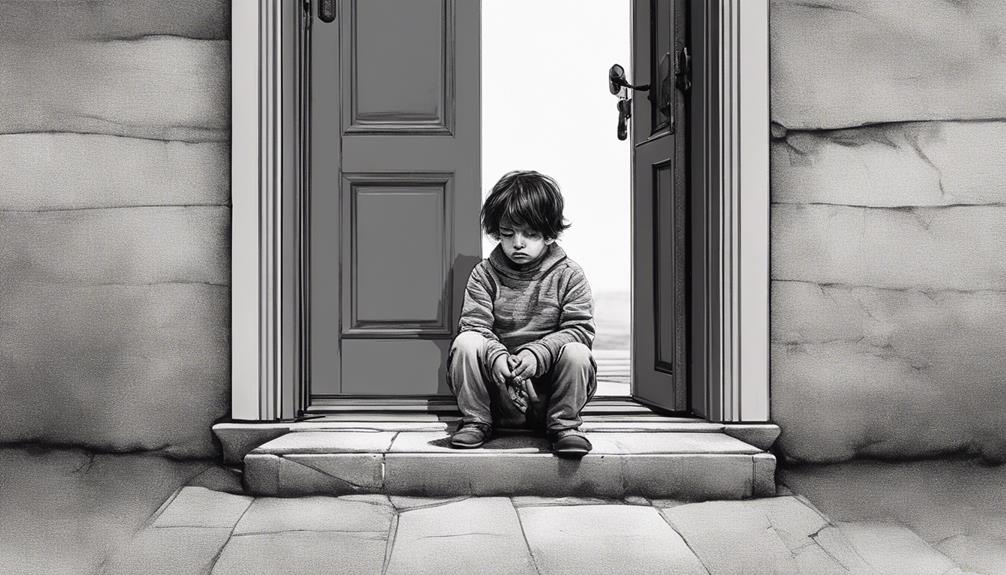
Understanding and managing feelings of sadness can be challenging for children, but 'When Sadness Is at Your Door' by Eva Eland offers a gentle and relatable approach to exploring this emotion.
This children's book delicately navigates the complex terrain of sadness, providing a safe space for children to explore and understand their emotions.
With minimal text and expressive illustrations, Eva Eland captures the essence of sadness, making it easier for young readers to identify and process their feelings.
'When Sadness Is at Your Door' offers a comforting perspective on dealing with sadness, emphasizing the importance of acknowledging and accepting these emotions in a healthy way.
Through this beautifully crafted story, children can learn valuable lessons about self-awareness, emotional well-being, and the power of embracing their feelings. Eva Eland's work serves as a beacon of hope and understanding for young readers, guiding them through the intricate landscape of emotions with compassion and reassurance.
Frequently Asked Questions
At What Age Can a Child Understand Divorce?
We believe children as young as 3 or 4 can start grasping the concept of divorce, understanding it as a permanent separation by age 7 or 8. The reasons behind divorce might challenge those under 10, but older kids begin to see its emotional impact.
Will a 4 Year Old Remember Divorce?
Yes, a 4-year-old may remember divorce due to emotional cues, routine changes, and disrupted family dynamics. These memories can impact their emotional development and perceptions. Supporting them with age-appropriate communication, reassurance, and consistency is crucial.
What Not to Say to Kids During Divorce?
We should avoid blaming kids for divorce, sharing inappropriate details, speaking negatively about the other parent, dismissing their feelings, or making unkeepable promises. It's crucial to validate emotions and offer support.
How Can I Help My Grown Child Through Divorce?
We can support our grown child through divorce by offering a listening ear, emotional support, and resources like therapy. It's crucial to respect their decisions while guiding them through legal matters and co-parenting challenges.
Are these Children’s Books about Divorce Effective in Helping Kids Understand and Cope with Divorce?
Yes, children’s books about divorce can be effective in helping kids understand and cope with the situation. However, it’s essential for parents to also consider seeking the guidance of the best counselors for children’s divorce to ensure comprehensive support for their kids during this difficult time.
Conclusion
In times of family change, children's books about divorce offer solace and understanding. Remember, 'it takes a village to raise a child,' and these books can be a valuable part of that village.
By exploring themes of love, resilience, and acceptance, these stories help kids navigate complex emotions and find comfort in knowing they aren't alone.
Let's continue to support children in processing their feelings and building emotional resilience through the power of storytelling.




